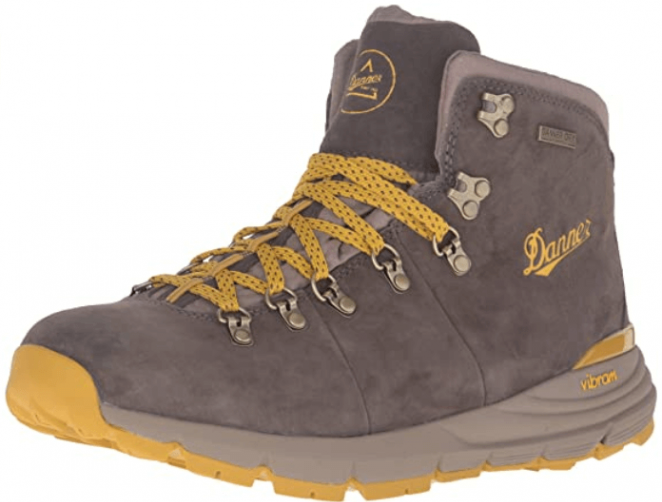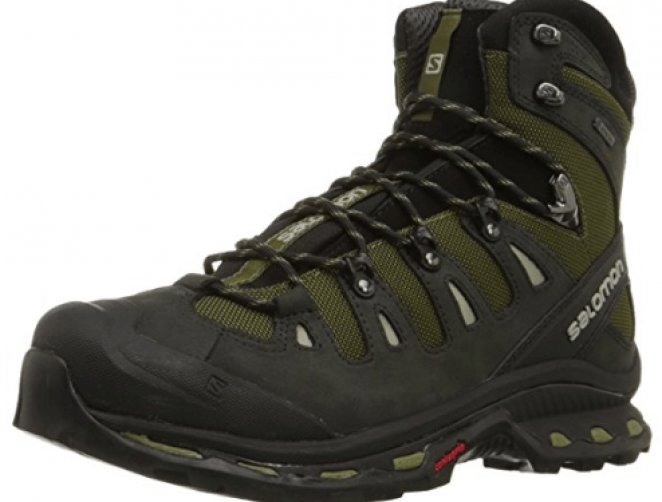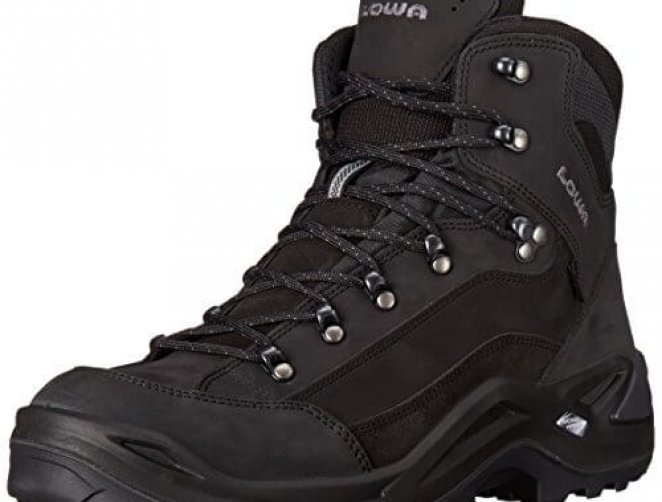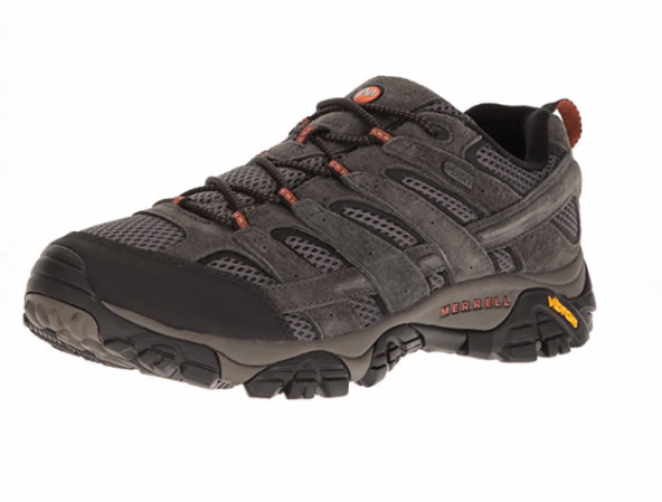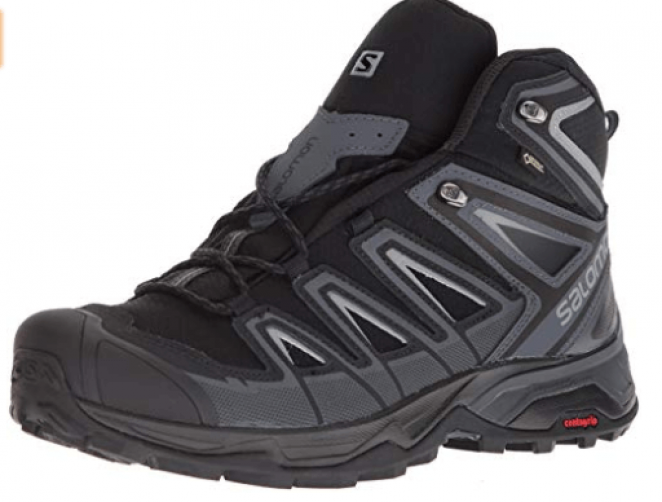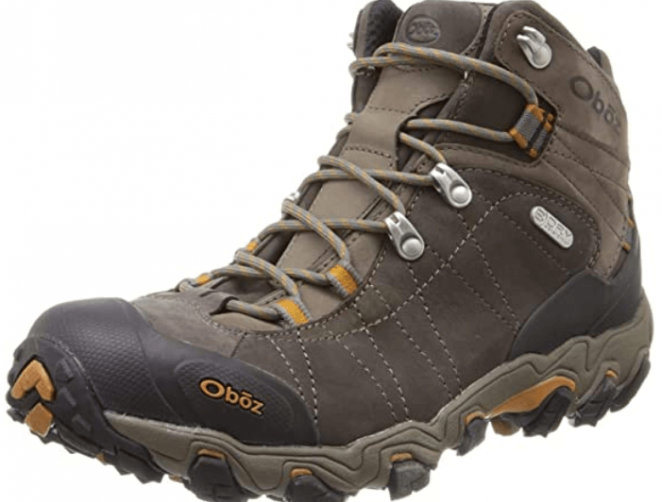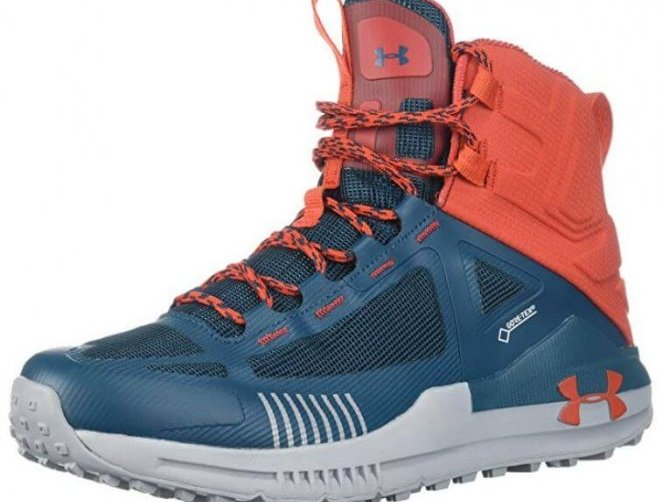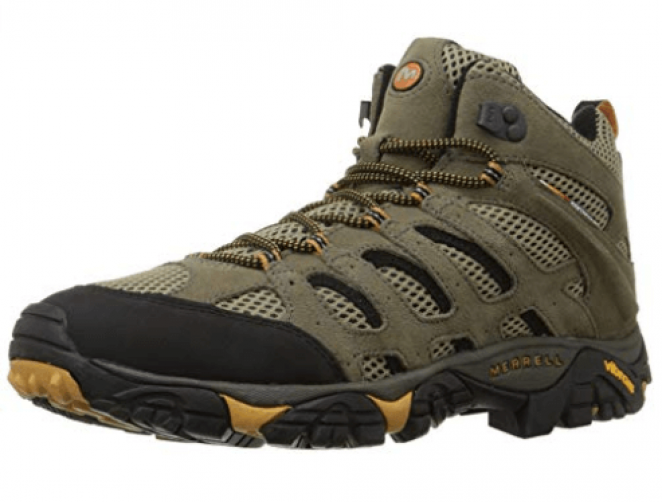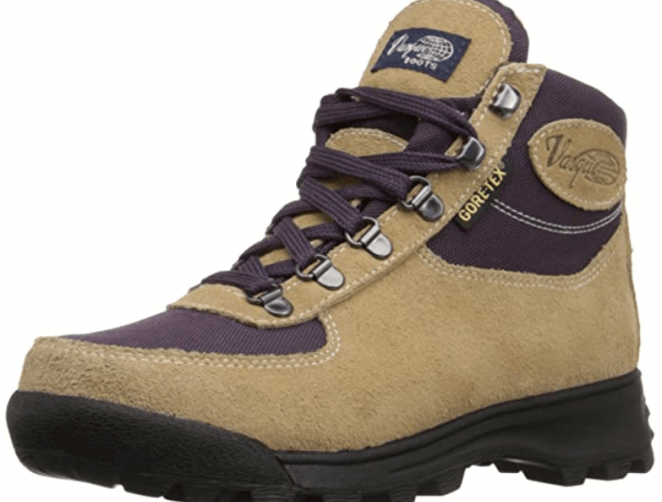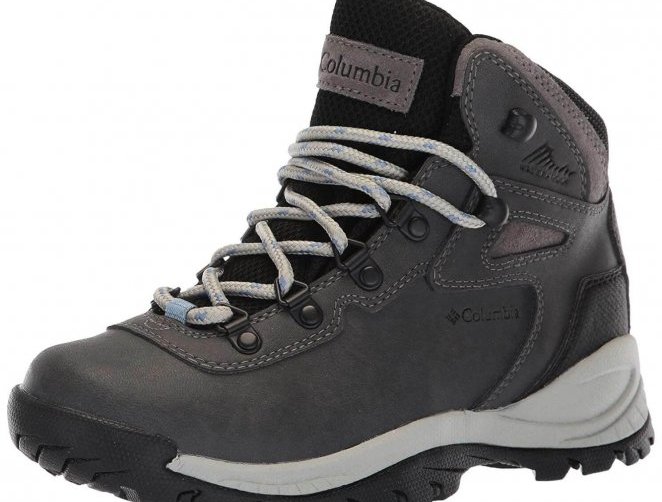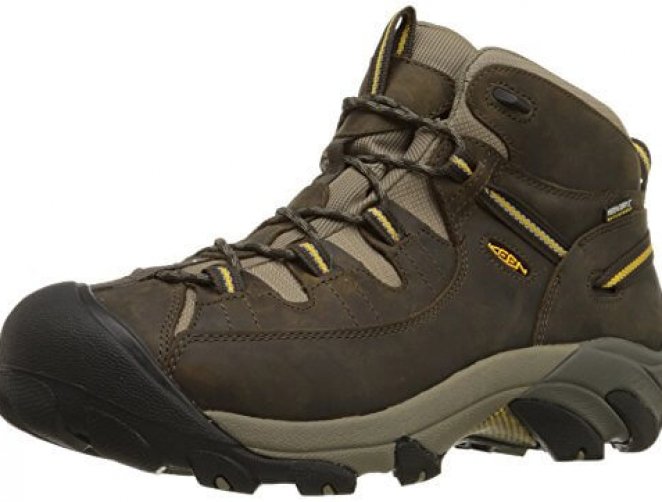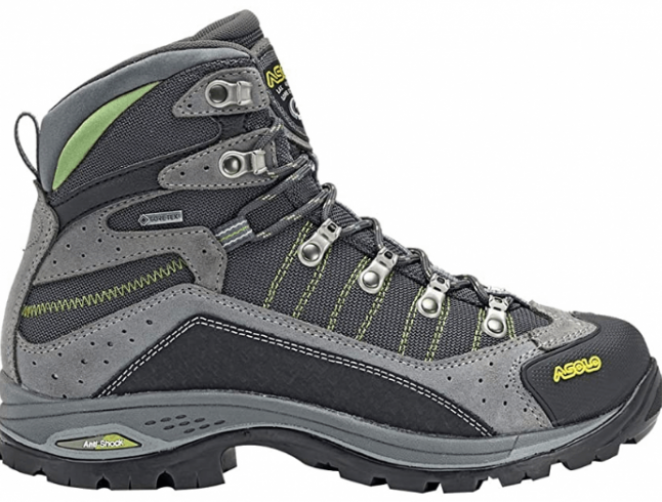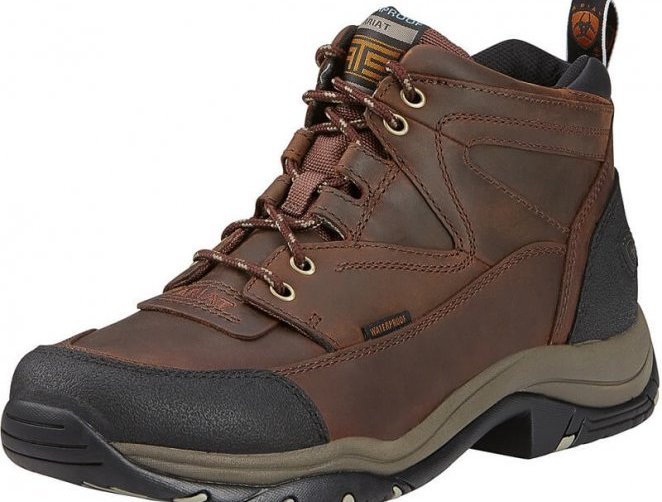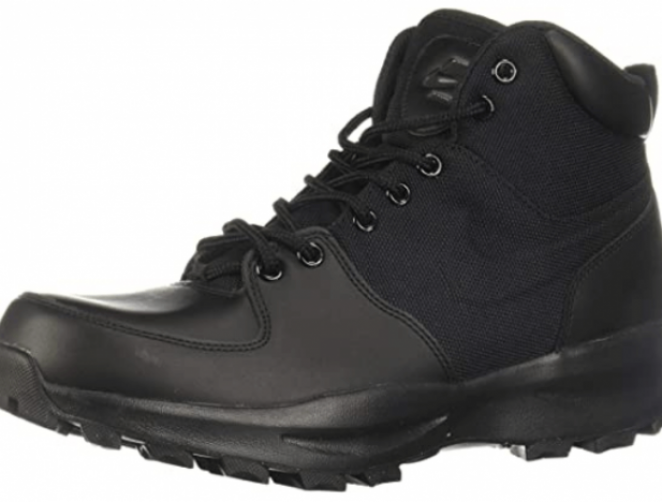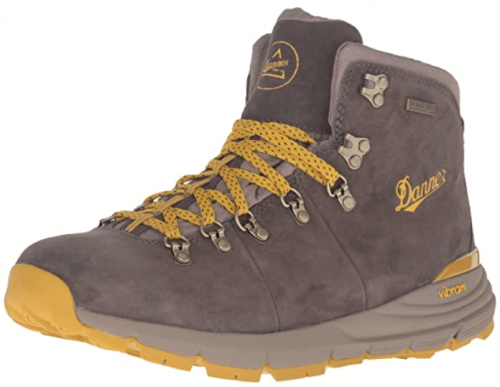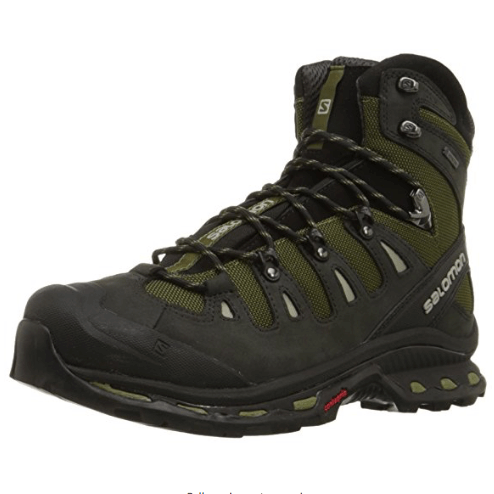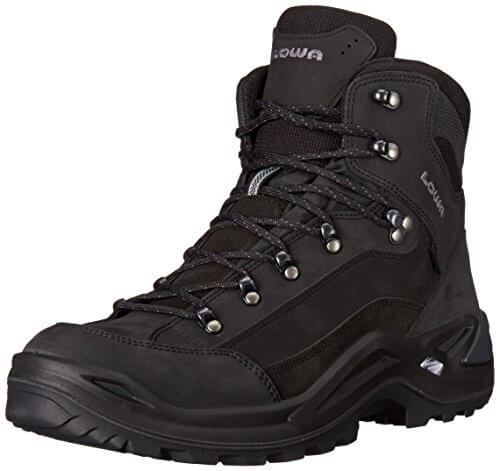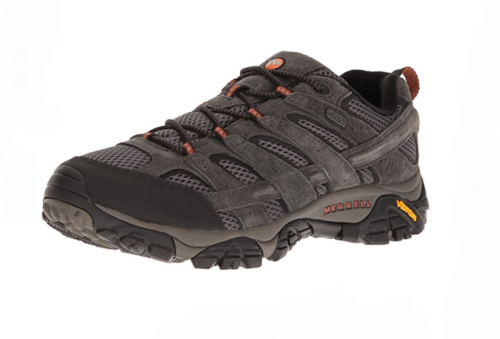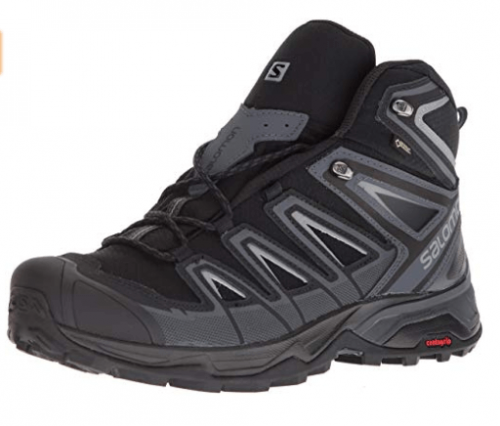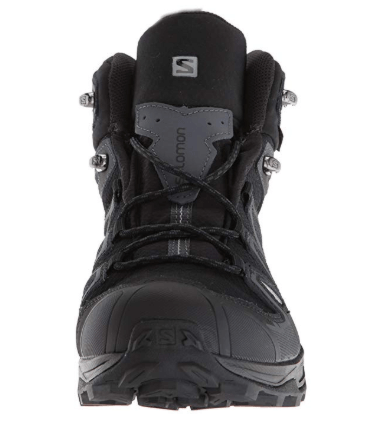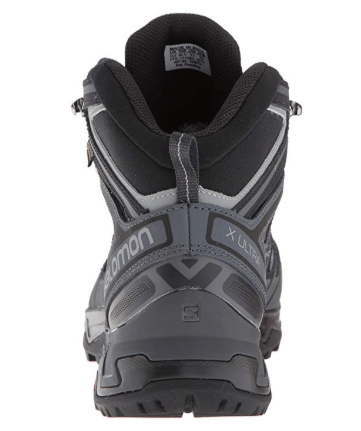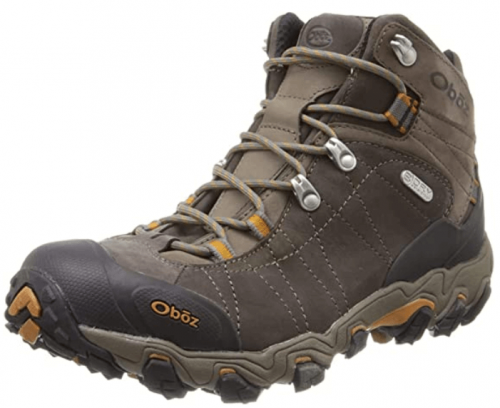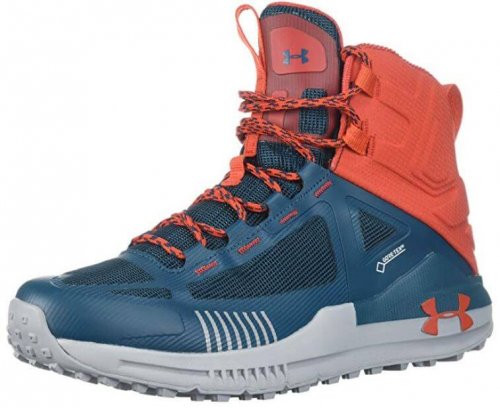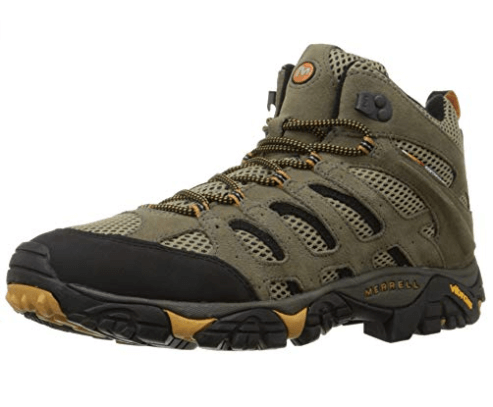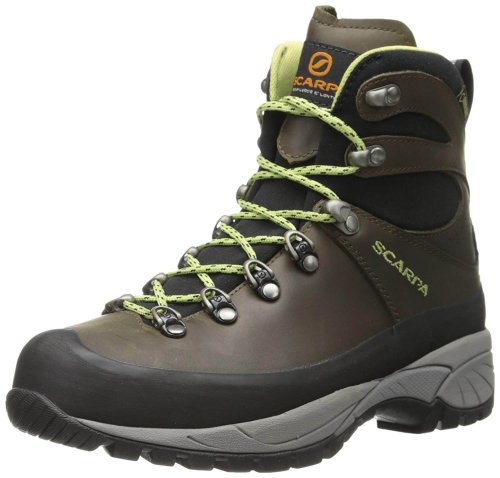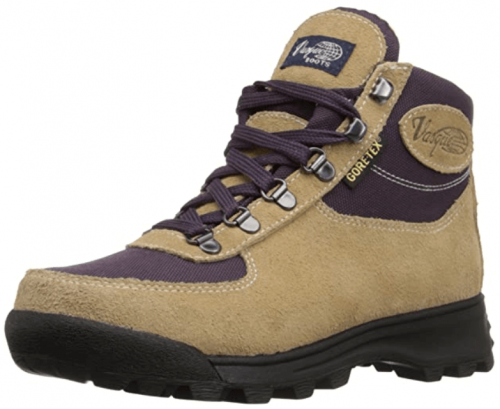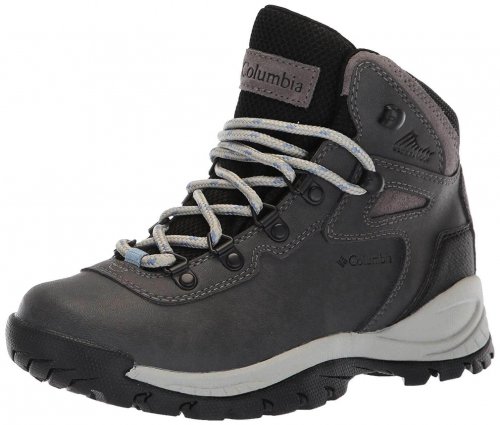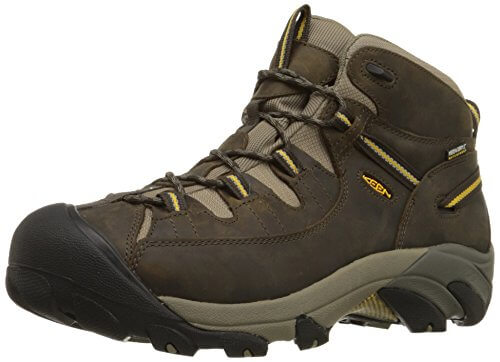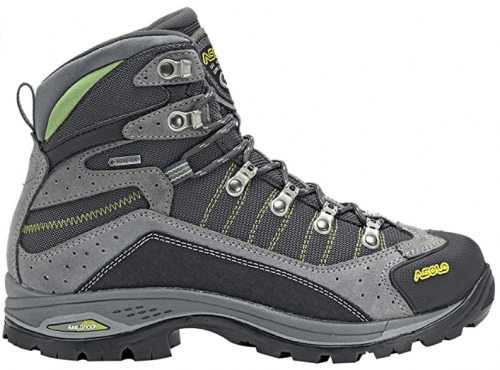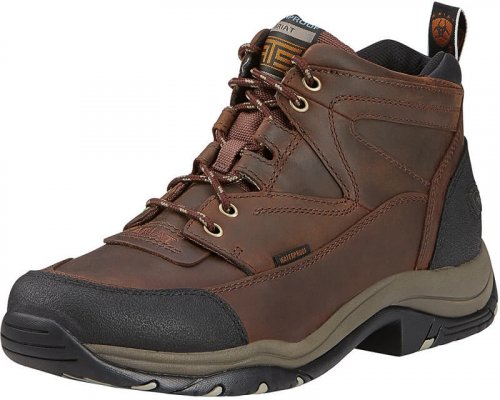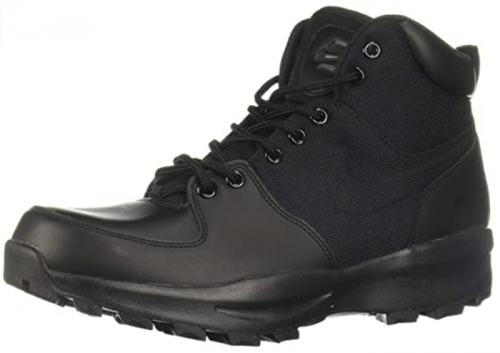15 Best Hiking Boots for Men Tested and Fully Reviewed

Finding the right boots can be a chore and an investment, so we put together the following list of the best hiking boots to help you find the right pair to suit your needs.
Standout Picks
Criteria Used for Evaluation
Support
The varying terrain encountered while hiking can fatigue or even injure unprotected feet.
With great hiking boots, support is built into the footbed to keep the foot locked in place and to provide cushioning from rocks and impact with the ground. More technical boots will feature a hard shank between the midsole and outsole to prevent the heel from dropping during ascents, therefore decreasing calf fatigue.
Additionally, hiking boots range in their lacing system and ankle height. Higher ankle cuffs can help prevent rolled and sprained ankles but come at the price of extra weight and less breathability. Ultimately, the amount of support you need comes down to the type of hiking you do and personal preference. If you mostly take casual hikes on relatively easy terrain, you may want to opt for lighter duty boots with a low ankle cuff. But if you regularly take long hikes over technical terrain, especially while carrying a heavy backpack, higher boots may be the way to go.
Traction
Increased support and better traction are the key reasons why hiking boots are recommended over your regular running shoes for, well, hiking.
The tread on the outsole of each boot has a pattern to increase grip on a variety of surfaces. Some boots feature more massive lugs to help you dig into softer ground and mud. The rubber composition also plays a role in the ability of your boot to stay put. Having boots with excellent traction makes a big difference while hiking and can help you step with confidence and maintain a more consistent stride, especially during inclement weather.
Comfort
Hiking is an excellent exercise but can place a lot of strain on your feet, legs, and back.
Finding boots that provide the right support for your foot shape can make a huge difference not only in the comfort of your feet but the comfort of your entire body while you hike. The right hiking boots will give you a good balance between support and flexibility to allow your foot to move appropriately for the given terrain.
Having flexible boots that can be worn comfortably straight out of the box is a beautiful thing. However, more technical hiking boots that require a more extended break-in will period will give you more customized support and may be worth a little more work upfront.
Durability
Functional hiking boots are built to take a beating.
Clocking miles and miles over rugged terrain will wear down even the highest quality boots over time. Active materials, extra supports, and even waterproofing will extend the longevity of your boots. We looked for options that provide excellent durability and have plenty of features built-in so you can get your money’s worth out of your investment.
Value
The adage you get what you pay for certainly applies to hiking boots.
Several of the pairs on our list cost over $200, but are packed with great features and quality construction. We also have several pairs that come in around $100 or less, and for that, you'll get a right boot, but it probably won't have the same level of support or super-durable construction you'd get with one of the higher-end boots.
We suggest thinking about your context and buying based on that. Are you an avid and experienced hiker who heads out on a new adventure every weekend? If so it's probably worth it to invest in a more expensive, fully-featured pair of hiking boots. If you're only going on shorter hikes less often, it may make sense for you to save some money by going with a less expensive, but still good quality pair of hiking boots.
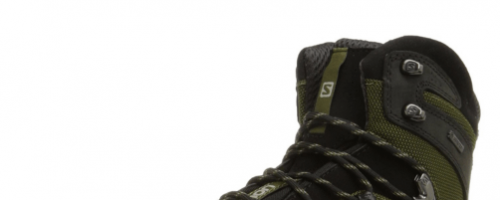 Click here to see more
Click here to see more Top-Rated Men's Hiking Boots
1. Danner Mountain 600
The Mountain 600 from Danner may look like your timeless climber, but there are tons of modern features both inside and outside this design to keep you protected and comfortable. It is composed of high-quality materials that keep your feet cool and dry when scaling a difficult mountain.
Read moreSupport/Stability:
The sole boasts an OrthoLite footbed which serves to cradle your foot and avoid digging into certain pressure points when worn all day long.
Traction:
The upper of the Mountain 600 is composed of full-grain leather which ensures that it is completely waterproof to keep your toes nice and dry. The Vibram Fuga outsole is a little less bulky than some of the other options out there on the market and is equipped with MegaGrip technology to keep your footing on rocky or slippery surfaces.
Comfort:
Inside, you will find materials that are designed to keep your feet nice and comfortable when the weather outside is less than ideal.
Durability:
If you are in the market for something that has a classic style and is composed of materials that hold up over the years, this is a great choice.
Value:
If you are in the market for something that has a lot of extra features to keep your feet protected and comfortable, this is a great option. Users love that it isn’t as heavy and bulky as some of the other options. It is important to note that the price point is slightly higher than some of the other brands out there, but we feel it is well worth it!
2. Salomon Quest 4D 2 GTX
These high-cut backpacking boots are an excellent option for those seeking great traction and comfort. Reviewers describe the comfort and flexibility of a running shoe with the high profile and support of a hiking boot. The lacing system provides customizable support high on the ankle without feeling too stiff or inflexible. Users note they do an excellent job keeping water out and require very little time to break-in.
Read moreSupport/Stability:
The high cut of these boots rises 6 inches from the arch to provide ample ankle support for those carrying a heavy load. Reviewers appreciate the adjustable lace system with 2 hooks along the ankle. Stopping at the first hook gives a bit more flexibility for a mid-boot feel, or you can increase stability by lacing the boots to the top. Either setting feels secure, and the foot seems to remain solidly in place. The sole provides excellent lateral stability without being inflexible.
Traction:
Users find the Contragrip outsole and solid lugs perform well in wet and dry conditions.
Comfort:
Users are impressed by the immediate support and short break-in period for these hiking boots. The combination of Nubuck leather and nylon provides excellent flexibility and the 2 lbs, and 13 ounces do not make feet feel heavy. Some reviewers think the insole is too thin and prefer to switch them out for their insoles. Users find the high ankles and waterproofing do an excellent job at keeping water out, even during quick creek crossings where feet are submerged completely. The newer version does seem to be a bit narrower than the original and users with more full feet do not find them as comfortable.
Durability:
Unfortunately, this is where these light to mid-weight boots fall short. The shoes do hold up well for some time but some users note premature separation of the sole or fraying at the seams.
Value:
These boots are on the more expensive side, and some users find themselves disappointed by their durability considering the cost.
"Salomon Quest 4D 2 GTX" is one of the best hiking boots on our list!
3. Lowa Renegade GTX 10
Flexibility meets structure in these light to mid-weight hiking boots. The midsole has a thicker build and a more grounded feel that still maintains some flexibility and movement through the nubuck leather upper.
Read moreSupport/Stability:
Users love the Lowa Renegade for its balance between lightweight flexibility and ruggedness. It has significantly more rigidity through the underfoot than light hiking shoes but does not feel too stiff or inflexible. Nubuck leather uppers provide good structure while remaining flexible and the mid-ankle cut, rising about 5 inches from the arch, gives reliable ankle support. The lacing system does not lock in the heel quite as well as the Salomon Quest, but it does provide a unique, customizable feel.
Traction:
Vibram outsoles mix rubber with hard lugs to provide reliable grip in a variety of conditions.
Comfort:
Similar to the Salomon Quest, these hiking boots require very little time to break-in. Users, not they are very comfortable right out of the box, and the adjustable lace system is great for accommodating a variety of foot sizes and shapes. They are reported to run a bit small, and the company recommends ordering a half size up.
Durability:
The thin leather upper provides flexibility and comfort right out of the box but does not do much in terms of long-term durability. Some users noted separation of the upper from the sole after not very much time but are thankful it does not take much time to break in the next pair.
Value:
The customizable lace system and short break-in period for these boots make them a great option for comfort for a variety of foot types and sizes.
"Lowa Renegade GTX 10" is one of the best hiking boots on our list!
4. Merrell Moab 2
The Merrell Moab is a fan favorite for lightweight comfort and flexibility on the trail. These low-cut hiking shoes provide a bit more support around the ankle and through the underfoot than a hiking shoe but maintain the flexibility and freedom of a running shoe. Fans of lightweight support love these shoes and are happy wearing them all day long.
Read moreSupport/Stability:
This flexible hiking shoe has more support than a trail runner but is much more manageable through the underfoot and collar than low top hiking boots. For short day hikes, this flexibility is great for keeping you moving quickly and does provide significantly more support for ankles than a regular running or even trail running shoe.
Traction:
The rubber Vibram outsoles provide excellent traction but are not the best on dry and dusty descents.
Comfort:
The Merrell Moab offers unrivaled comfort as a hiking shoe and requires no time to break-in. Extra padding around the collar and tongue provide comfort around the ankle opening. A flexible build in the upper and footbed is so comfortable that many users prefer these as regular walking shoes. The cushioning is a bit thinner through the footbed so some rocks can be felt along the bottom of the foot.
Durability:
The Moab line is an excellent option for reliable durability. The waterproofing will need to be refreshed annually, but the shoe holds up very well especially when considering the lightweight design.
Value:
Consistently under 150 dollars, this is a decent option for casual hikers.
"Merrell Moab 2" is one of the best hiking boots on our list!
5. Salomon X Ultra 3 Mid GTX
Salomon XUltra 3 Mid GTX has all the comfort of a great trail shoe while offering all the added support and height of a Great hiking boot. Salomon doesn't just know shoes, they know terrain and they put it all in this hiking boot.
Read moreSupport/Stability:
Adding the Contragrip rubber sole to the lug pattern gave the X Ultra 3 Mid GTX that extra grip you want when your hiking the trails. Add some Goretex to the rest of the shoe and you have a well-rounded hiking boot fit for any type of hiking condition.
Salomon made these with less stack height in the collar but added padding for the extra ankle support most higher designs offer, for a more stable ride. This lower profile also allows for them to be worn daily without screaming “I LIKE MUD”.
Traction:
It is light, versatile and keeps your feet feeling great no matter the terrain.
Comfort:
As we mentioned in the intro, these are made with a trail shoe design. They offer support in all the right areas and padding to make sure you do not get the evil ankle roll. This makes them more flexible than most in their class.
However, this also means the under is a bit thinner compared to others. Salomon works out the difference by adding a strong chassis design that holds the foot in place while giving great toe protection against roots and sharp objects.
Durability:
Although they cut out some weight with thinner midsoles, making it less durable than some on the list, this doesn't affect the rubber outer and high-grade toe protection that creates the durability this shoe does offer, which helped it get a spot on out 10 Best Hiking Boots lineup. The Goretex running on the upper also adds a ton of durability, while making the shoe waterproof as well.
Value:
One of Salomon’s best sellers, the X Ultra 3 GTX is a great value for those that are wanting to get some miles in without the added load: fast-paced hikers, backpackers, etc. These will keep you dry, comfy and stable and won’t make you wonder where you’re money went.
6. Oboz Bridger BDRY
If your adventures take you to some pretty treacherous location, the Bridger BDRY from Oboz will make sure you make it to your destination on one piece! Plus, the interior is incredibly comfortable and great at keeping your feet warm and dry.
Read moreSupport/Stability:
The very first thing that we noticed about this design is that it has a super thick and treaded rubber heel. If you enjoy walking off of the beaten path, the outsole of the Bridger BDRY makes it so that you cannot feel a single rock or tree root behind your feet. It is important to note that due to this thick heel, these are a little bit heavier than some of the other options on our list.
Traction:
It also includes a TPU chassis to ensure proper balance when the ground is a little unstable under your feet.
Comfort:
Users also really appreciate how comfortable these are in the midsole. They boast a single-density EVA midsole that provides excellent cushioning that is balanced to prevent points of targeted wear and tear like other options out there on the market.
Durability:
It has an incredibly durable rubber sole that holds up quite well over the years without breaking down or losing traction.
Value:
If you are the market for a design that is made to forge a path there is none, this option will get you there. They are a bit heavier than other options on the market, but they are also designed for more treacherous trails. We love the style and performance of this option, as well as the perfect fit.
7. Under Armour Verge 2.0 Mid GTX
This pair of hiking boots from Under Armour sits comfortably at the intersection of hiking boots and shoes, providing the protection and stability of hiking boots and the breathable comfort of less bulky shoes. They’re an excellent alternative for hikers who need the traditional features of a boot but prefer the feel of a lightweight shoe, and they might be more affordable than some of the other boot options on this list.
Read moreSupport/Stability:
The Verge 2.0 may not look rough and tumble, but they do have the stability and protection to carry you through tough terrain. The combination of welded overlays and ESS rock plates bring excellent support and help with balance while you’re hiking.
Traction:
The Michelin rubber outsoles are molded to the Wild Gripper lug pattern, so they provide decent traction without being obtrusive.
Comfort:
These are more lightweight than most heavy-duty hiking boots, with light EVA midsoles and a breathable outer membrane. The quality Gore-Tex 100% waterproofing is good for dewy hikes and misty treks and offers protection from mild weather.
Durability:
Sturdy welded supports and rock plate protectors add extra durability, while quick-dry materials help extend the life of these shoes. Textile uppers may prove easier to care for than various types of leather that usually need a little more care, but may also not provide the same level of durability that leather does.
Value:
Although different size options and colors may affect the price range of these hiking boots, they still dip below most of the other boots on our list, potentially making them a cost-friendly option for buyers on a budget. Even at the higher cost, the price is justified by all of the great features and versatility of this shoe.
"Under Armour Verge 2.0 Mid GTX" is one of the best hiking boots on our list!
8. Merell Moab Ventilator Mid
Merell made the Moab Ventilator Mid for those than hike on a budget. These are light, affordable and offer all the other great specs the best hiking boot should have for a fraction of the cost. They keep you supported and are loaded with for even the heartiest trails. If you're just looking to go for a day trip or get some miles in on the trail, these are a great option.
Read moreSupport/Stability:
The Moab Ventilator has the Vibram sticky rubber outer soles that help keep the slippage under control. They have an orthopedic insole to add to it for extra support that keeps you from feeling the rough terrain beneath your feet, helping you stay upright and trecking through the terrain.
Traction:
Merell didn't add any lugs to this design so that means it is a bit more versatile and stable for more moderate terrain. The stability and traction the Moab Ventilator offers are ideal for those who are looking for a lighter and easier going option or for beginners who want to get a solid feel for the hiking life.
Comfort:
That Orthopedic footbed we mentioned has an anatomical design that cushions and cradles the foot; it’s as if you have a pillow in your hiking boot. It is a leather and textile blend that allows for extra airflow as well.
Airflow combined with the M-Select dry wicking technology leaves your feet dry and fresh. Merell also added the M-Select Fresh to prevent odor from making an unpleasant appearance post-hike.
Merell Moab Ventilators have a 4” height that adds support to the ankle. This helps you stay aligned with your stride no matter how rocky a trail can get. The lock-in lacing system keeps the boot in place and all your pressure is ut into the air cushion heel for a super shock absorbency that keeps you going longer without foot pain.
Durability:
Water resistance and leather/textile blended material make these a pretty darn durable hiking boot. Keeping water out while allowing them to breathe offers longevity to the hiking boot. Because there are no lugs, wear is not an issue either. The Vibram rubber is known to last and the tread design aids in it lasting longer than normal as well.
Value:
Merell Moab Ventilator is a steal. You're getting all the boot without spending all the monies. They are highly rated by consumers for comfort and support and offer pretty decent durability too. Although we would take these scrambling, they are highly effective for those day-trippers and fast-paced hikers that want to push through terrain with ease.
9. Scarpa R-Evolution GTX
This backpacking boot provides more substance through the midfoot and sides without sacrificing much in the way of weight. Although it is not highly specialized, it is versatile and performs well in a variety of moderately technical situations. This boot works well for backpacking and summer hiking. The lightweight suede-like leather takes a bit longer to break in but maintains a breathable, yet waterproof feel that users love.
Read moreStability/Support:
These boots have a sturdy feel from the first second you put them on. The midsole is substantial and feels solid underfoot, and the boot hits high on the ankle to provide support. It is a solid boot for backpacking with heavy loads but is not clunky and performs more like a light alpine boot.
Traction:
Vibram outsoles provide excellent traction on wet and dry trails.
Comfort:
The R-evolution features a sock-fit design with a memory foam-padded tongue to cradle the foot and prevent the fabric from bunching. The solid build of these boots requires a short break-in period to conform to the foot. However, even during this break-in time, few users report blisters. The innovative sock-fit tongue and lacing system allow for a more customized fit without pinching making this a comfortable option for a variety of foot widths.
Durability:
The suede uppers and stitching on these boots make them feel well made and high quality. Users find they stand up well to rugged trail conditions and resist abrasions. A few reviewers found that the green color on the tongue does bleed onto socks when wet. Others wish the laces felt more substantial and report some issues with the laces slipping during use.
Value:
Well over 200 dollars, these are on the more expensive end for hiking boots. The innovative fit system and precision build do set these apart from a lot of the competition, however, and Scarpa is a brand that has been around for a long time and has an excellent reputation in the outdoor gear community.
"Scarpa R-Evolution GTX" is one of the best hiking boots on our list!
10. Vasque Skywalk
The thing that makes the Skywalk from Vasque stand out from the pack is its compact and lightweight design. It has a few key features that make it perfect for trekking in hot weather conditions to keep your feet cool as well as dry. Users love how well these fit without feeling too heavy and bulky.
Read moreSupport/Stability:
The very first thing that we noticed about this design is that the upper is composed of a blend of mesh as well as suede to keep feet cool as well as dry. If you are often out on the trails on super hot days in the summer and want something that is light and easy, this is the perfect pair for your needs.
Traction:
We also like that the sole on this option is simple and not too heavy, but does a great job at really gripping the trail. The Vasque Pyrenees rubber sole has deep treads that are ideal for conditions that are muddy, rainy, or even icy as well!
Comfort:
It has a frame that really fits your foot more like a classic sneaker but performs like a seasoned trail shoe.
Durability:
It may clock in at a higher price point, but it is well worth it for those that need something that is lightweight, very durable and versatile.
Value:
If you are in the market for something that is a little more lightweight than some of the other designs out there on the market.
11. Columbia Newton Ridge Plus
Columbia makes a good pair of affordable and reliable standard hiking boots. They provide strong support that rises around the ankle. They require little break-in time, and the combination of waterproof leather and breathable mesh make these boots a good option for use year-round.
Read moreSupport/Stability:
The Newton Ridge Plus has excellent support through the sides and ankle, but the underfoot does not cradle the foot quite as well as some other designs. For day hiking boots will provide excellent stability to prevent ankles from rolling.
Traction:
Omnigrip lugged outsole provides excellent grip. Users find they work great on rocky surfaces but do not perform as well as Vibram outsoles on loose gravel or wet conditions.
Comfort:
Despite the full-grain leather upper, these boots are easy to break in and are reasonably comfortable straight out of the box. Those with higher arches do prefer their inserts for additional arch support. Many users also find heavy leather and waterproofing to be a bit to warm for hot conditions.
Durability:
These boots are very durable especially considering the budget price tag.
Value:
At less than 100 dollars these shoes are a bargain. They provide excellent ankle support and traction for hikes where running shoes just won’t cut it.
"Columbia Newton Ridge Plus" is one of the best hiking boots on our list!
12. Keen Targhee II
It is a reliable option for a standard trail hiking boot. The durable leather upper and tough rubber sole protects your feet in rugged terrain. The rigid build is supportive but not too inflexible and creates excellent ankle stability for day hikes. These hiking boots are comfortable right out of the box, but other options are lighter weight and more breathable.
Read moreSupport/Stability:
The Keen Targhee offers more in the way of waterproofing and foot protection than support for hiking. The mid-cut height does provide reliable ankle support, but the underfoot structure is somewhat lacking.
Traction:
Keen rubber outsoles provide traction comparable to Vibrams. The traction is excellent on wet surfaces, but the lack of mid-foot support can lead to the unsure footing on more challenging descents.
Comfort:
Comfort is the main selling point of these hiking boots. They have a softer, padded feel that opposes the rigidity of most hiking boots. The Keen Dry technology effectively waterproofs these boots while remaining more breathable than those with full Gore-Tex liners.
Durability:
These Keen boots are well built and highly durable. Some users note a few scratches to the Nubuck leather uppers but no substantial damage.
Value:
These are mid-range in price. If you are planning to stick to trails and are seeking comfortable waterproofing and support, these Keen boots are worth the investment.
"Keen Targhee II" is one of the best hiking boots on our list!
13. Asolo Drifter
If you need something that will provide excellent support not only to your footbed but also your ankles as well, the Drifter design from Asolo is a great choice. Users love that it boasts a sleek and modern style, and is packed with features that will make it something you will love wearing from morning into the evening.
Read moreSupport/Stability:
It has a two-layer EVA foam midsole that contours to the shape of your foot over time for a snug fit that will also work to keep your feet stable and dry.
Traction:
We noticed it has a Vibram outsole that really grips the trail ahead of you. The treads on the base of this design aren’t as big and bulky as other models, but it does an excellent job at gripping slippery surfaces.
Comfort:
We loved that this design has a GORE-TEX lining to help keep your feet warm and dry when scaling difficult terrains.
Durability:
If you really want something that will hold up well on the trails over the years, this is well worth the extra cost.
Value:
It is important to note that this option from Asolo clocks in at a price tag that makes it one of the most expensive designs to make our list.
14. Ariat Terrain H2O Copper
Ariat specializes in riding boots, but users find they make reliable hiking and walking boot as well. These boots are not best suited for technical terrain but provide excellent support and waterproofing for walking long trails and spending all day on your feet.
Read moreSupport/Stability:
The full-grain leather uppers give this boot a sturdy feel with the support that rises to the mid-ankle. The footbed features Ariat’s exclusive ATS (Advanced Torque Stability) technology to cradle the foot and provide multi-directional support.
Traction:
The outsole is made from Ariat’s Duratread technology which employs a proprietary rubber compound for flexible and slip-resistant performance. The tread is more excellent and does not have the large lugs that are common to typical hiking boots. Some users find they do not perform as well when scrambling over rocks.
Comfort:
Comfort is a big selling point for these hiking boots. Reviewers love these for extended backpacking trips where they are on their feet all day. They do run a bit significant and are useful for accommodating wide feet.
Durability:
The full-grain leather and quality build provide excellent durability. The waterproofing on these boots is very useful and keeps feet dry through most conditions.
Value:
For under 125 dollars these are a great value. They are not the most technical hiking boots available but are very comfortable and supportive for extended wear on easy to moderate terrain.
"Ariat Terrain H2O Copper" is one of the best hiking boots on our list!
15. Nike Manoa
Looking to bring a little bit of style to your next outdoor adventure? What we loved most about this design from Nike is that it doesn’t exactly look like your traditional outdoor shoe, but it is certainly built like one!
Read moreSupport/Stability:
Another thing that users really appreciated about this design is that it is a tad more flexible than other designs out there on the market. The heightened flexibility means that you may feel all of the rocks and tree branches under your feet, but it means you will be more agile.
Traction:
This sleek design is made to scale difficult terrain, and the leather upper keeps feet cool, dry, and happy.
Comfort:
Our favorite feature of the Manoa is that the upper is made from 100 percent leather with very few seamlines. The absence of seam lines not only helps to keep your feet dry when the weather is soggy, but it also limits the potential for rubbing your feet raw. This is especially important when you are breaking them in.
Durability:
It is composed of quality materials to keep your feet cool, comfortable, and dry when heading off of the sidewalks for the day.
Value:
If the style is just as important as performance, you may want to check out the Manoa from Nike. Plus, they come in at a price tag that won’t break the bank.
Sources
- , How to Clean Hiking Boots, Web Article
- , How To Choose Hiking Boots, Web Article
- , 10 Important Characteristics Of Hiking Shoes Explained, Blog


